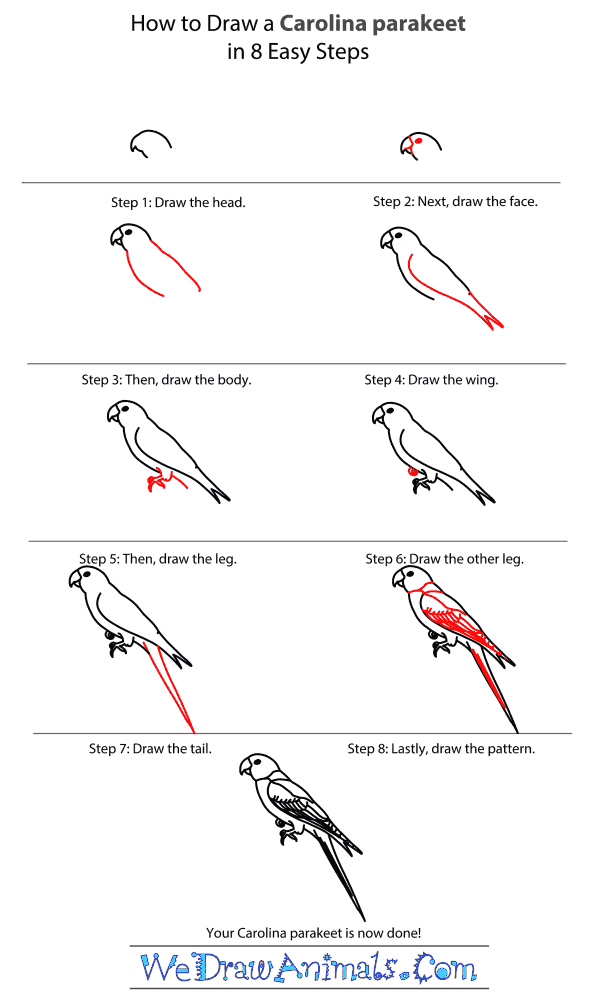In this quick tutorial you'll learn how to draw a Carolina Parakeet in 8 easy steps - great for kids and novice artists.
The images above represent how your finished drawing is going to look and the steps involved.
Below are the individual steps - you can click on each one for a High Resolution printable PDF version.
At the bottom you can read some interesting facts about the Carolina Parakeet.
Make sure you also check out any of the hundreds of drawing tutorials grouped by category.
How to Draw a Carolina Parakeet - Step-by-Step Tutorial
Step 1: Draw the head. It is an upside down "U" with a hooked beak at the left side of the tip of the "U".
Step 2: Next draw the face. There are two bent lines along the top and bottom of the beak. Just to the right of the beak is a large eye.
Step 3: Continue the left head line down and curve it to the right. Draw the right head line down and angle it to the right.
Step 4: Now draw the wing. It starts in a large curve just below the head and angles back beyond the back line. Draw two sharp points at the end of the line and then bring the line up to join the back line.
Step 5: At the end of the belly line draw a short line to make the leg. There are three claws at the end of the leg. The claws point slightly down.
Step 6: Draw the other leg just to the left of the first leg. All you draw are two short claws.
Step 7: Between the end of the belly line and the wing line draw a long tail. Draw the two lines down and bring them to a long sharp point.
Step 8: Finally, draw the feather patterns. There are long lines along the tail. Add long wavy lines to the wing and the head.
Interesting Facts about the CAROLINA PARAKEET
The Carolina Parakeet is a member of the bird group and the scientific term for them is Conuropsis carolinensis. Another name for this species is the Carolina Conure, which had a green body, red and yellow head, big beak, and long tail. They are in the Parrot family from Central and South America. This breed lived in the central to eastern part of the United States.
Did you know?
- This animal was first documented in 1583.
- The last confirmed sighting in the wild was 1910.
- Their last confirmed sighting in captivity was 1918.
- This species was recognized as extinct in 1939.
- They were 1 of 2 parrots that previously occupied North America.
- This creature was up to over 1 foot long.
- Their wingspan was up to almost 2 feet wide.
- They lived for at least 35 years in age.
This species lived in the highest latitude of any other parrot, including Wisconsin and New York. They sought old forests as their neighborhood, since dead trees can be hollow for making nests. These animals were deadly to predators, since they ate the poisonous seed of the Cocklebur plant. Deforestation and hunting for the pet trade has contributed to the reduction in population of apparently zero.









